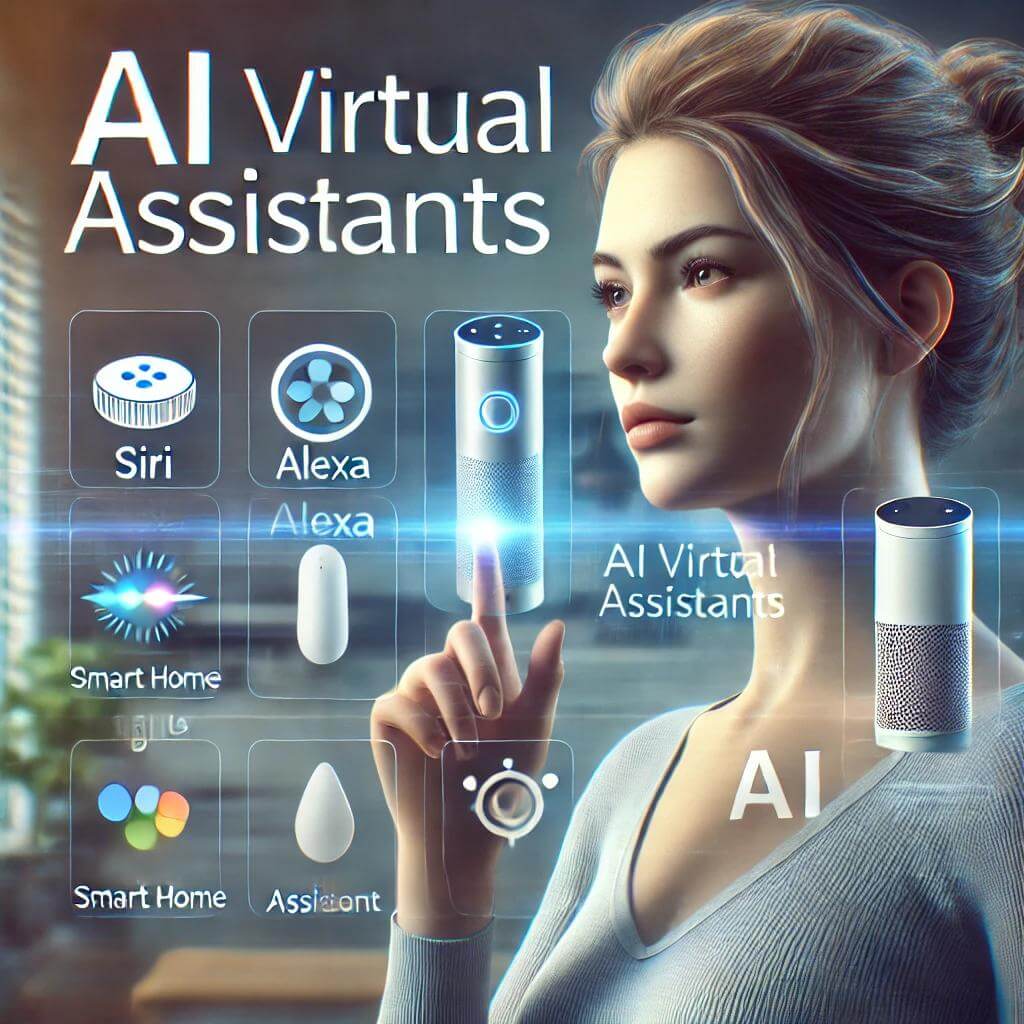AI-Powered Virtual Assistants: Simplifying Daily Life
Artificial intelligence (AI) has dramatically changed how we manage our daily tasks, communicate, and even control our homes. At the forefront of this revolution are AI-powered virtual assistants—such as Siri, Alexa, Google Assistant, and Cortana—that simplify everything from setting reminders to controlling smart home devices. In this article, we will explore how these virtual assistants work, their role in task management and smart home integration, and what the future holds for this evolving technology.
Popular Virtual Assistants
The rise of virtual assistants has transformed the way we interact with our devices. Each major tech company has its own version of an AI assistant, and each one offers a unique set of features.
Siri (Apple)
Apple’s Siri was one of the first AI-powered virtual assistants to gain widespread attention. Integrated with all Apple devices, Siri can perform a range of tasks, including sending texts, making phone calls, setting reminders, and even controlling smart home devices through Apple HomeKit.
Alexa (Amazon)
Amazon’s Alexa is a powerful assistant designed to work seamlessly with the Amazon Echo and other smart home devices. Alexa excels in smart home integration, making it easy to control everything from lights to security systems with simple voice commands.
Google Assistant
Google Assistant stands out for its deep integration with Google’s ecosystem of services, such as Gmail, Google Calendar, and Google Maps. In addition to voice-activated tasks, Google Assistant is excellent at providing contextual answers to queries, thanks to Google’s search engine prowess.
Cortana (Microsoft)
Though Cortana has seen a decline in popularity, Microsoft’s virtual assistant remains useful for those who use Windows-based systems. Cortana can handle tasks like managing calendars, answering emails, and setting reminders, especially for business users.
Voice-Activated Tasks: Streamlining Daily Activities
One of the most valuable aspects of AI-powered virtual assistants is their ability to handle everyday tasks through voice commands. Whether it’s making a call, sending a text, or setting an alarm, these assistants make life more efficient.
How Voice-Activated Tasks Work
Virtual assistants use natural language processing (NLP) to understand voice commands. When you speak a command—such as “Set a reminder for my meeting at 3 PM”—the AI processes the language, converts it into a task, and executes it.
Common Voice-Activated Tasks:
- Calling and texting: Assistants like Siri and Google Assistant allow you to make hands-free calls or send texts by just saying the name of the contact.
- Scheduling and reminders: Setting reminders or appointments has never been easier. A simple “Remind me to buy groceries tomorrow” creates a task that the assistant will notify you about.
- Weather and news updates: Ask for the current weather or the latest news, and the assistant provides real-time updates tailored to your location and preferences.
Comparison of Popular Voice-Activated Tasks
| Task | Siri | Alexa | Google Assistant | Cortana |
|---|---|---|---|---|
| Calling | Yes | Yes | Yes | Yes |
| Texting | Yes | No | Yes | Yes |
| Setting reminders | Yes | Yes | Yes | Yes |
| Weather/news updates | Yes | Yes | Yes | Yes |
Smart Home Integration
Virtual assistants have gone beyond just task management—they have become the backbone of smart homes. By integrating with Internet of Things (IoT) devices, virtual assistants enable users to control everything in their homes with voice commands.
How Virtual Assistants Control Smart Home Devices
Smart home integration allows virtual assistants to manage devices such as lights, security cameras, and thermostats. With just a few words, you can turn off the lights, lock the doors, or adjust the temperature. Devices like Nest, Ring, and Philips Hue connect seamlessly with virtual assistants, creating a more convenient living environment.
Examples of Smart Home Integration
- Lighting: Turn lights on or off with commands like “Alexa, turn off the bedroom lights.”
- Security: Use Google Assistant to check security camera footage or lock doors via Nest Secure.
- Entertainment: With Siri, you can control your Apple TV or HomePod, asking it to play your favorite music or TV shows.
Benefits of Smart Home Integration:
- Convenience: Hands-free control of home devices makes daily life easier.
- Energy efficiency: Automate lighting and climate control to reduce energy usage.
- Security: AI-powered cameras and locks add a layer of security, giving homeowners peace of mind.
AI in Customer Support
Beyond personal use, AI-powered virtual assistants have been revolutionizing customer service across industries. Companies are increasingly turning to virtual assistants to provide real-time support, reducing wait times and improving customer satisfaction.
How Virtual Assistants Improve Customer Support
By using AI to handle routine inquiries, businesses can free up human agents for more complex tasks. AI-powered assistants can help customers track orders, troubleshoot technical issues, or even process refunds.
Examples of AI in Customer Support:
- Banking: Virtual assistants can answer questions about account balances, recent transactions, or nearby ATMs.
- Retail: AI helps customers track orders, check inventory, or initiate returns.
- Telecommunications: Virtual assistants can guide customers through troubleshooting steps, improving response times.
Advantages of AI in Customer Support:
- Reduced wait times: Virtual assistants handle multiple inquiries simultaneously, leading to quicker responses.
- 24/7 availability: Customers can receive assistance anytime, improving accessibility and satisfaction.
- Cost savings: Automating customer support helps businesses cut costs by reducing the need for human agents.
The Future of Virtual Assistants
As AI technology continues to evolve, virtual assistants will only become more predictive and proactive. Soon, they will be able to anticipate needs, suggest actions based on past behavior, and even integrate with emerging technologies like augmented reality (AR).
Predictive and Proactive Assistance
Future virtual assistants will be able to predict user behavior. For example, if the assistant notices that you always call a particular contact at a certain time, it might suggest making that call in advance.
Integration with Augmented Reality (AR)
As AR technology develops, virtual assistants may work alongside it to provide even more immersive experiences. Imagine walking through your home and, with a simple glance at an object, the virtual assistant brings up relevant information or controls.
Enhanced Personalization
Virtual assistants will become more personalized, learning user preferences and tailoring their responses to individual needs. From suggesting new music based on listening history to offering shopping suggestions, AI will make interactions more intuitive and relevant.
Conclusion
AI-powered virtual assistants are transforming the way we interact with technology. From simplifying daily tasks to managing smart homes and providing real-time customer support, these assistants are becoming indispensable. As the technology continues to evolve, we can expect virtual assistants to become even more predictive, personalized, and integrated with future technologies.




Post Comment